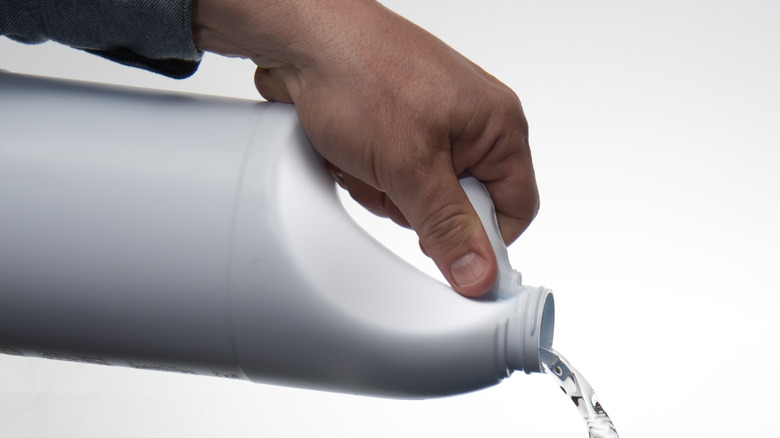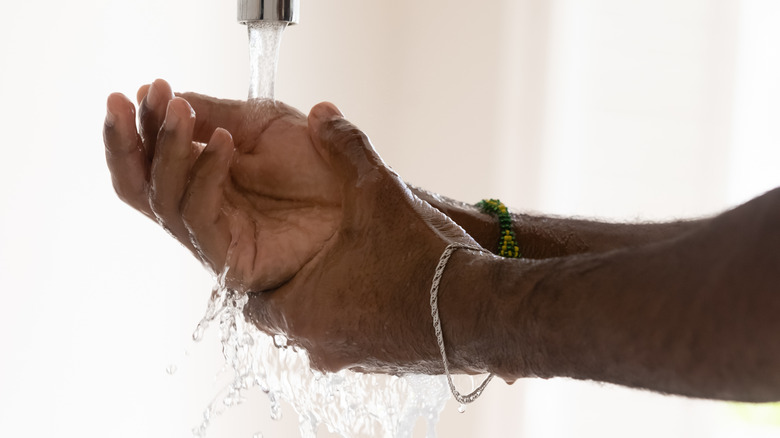What To Do If You Get Bleach On Your Skin
Bleach is a staple in many household cleaning cabinets. While commonly used as a sanitizing solution, the chemical should not be used haphazardly, as it can pose a risk to human health if inhaled, ingested, or comes in direct contact with skin, explains the Burn and Reconstructive Centers of America (BRCA).
What is it about bleach that makes it so hazardous to human health? Chlorine bleach is a base that contains a pH level ranging from 11 to 13, meaning it is considered to be strongly alkaline (via the BRCA). In comparison, the pH level of human skin sits around 5.7 (via Healthline). Bases with a pH level exceeding 10 can inflict chemical burns to our skin, according to Sciencing. With a pH level between 11 and 13, bleach falls into this category. Even diluted bleach products can still pose a danger, per the BRCA. Here's what you need to know if bleach accidentally makes its way onto your skin.
When a bleach burn requires medical care
A bleach chemical burn does not manifest the same way as a heat-related burn, explains the BRCA. Rather than emerging immediately, hours may pass before symptoms become apparent. Such symptoms include swelling, redness, pain, and blistering. The longer bleach sits on the skin, the more likely it is to become a serious chemical burn. Therefore, you'll want to take immediate action.
As per the BRCA, you'll first want to remove any clothing or jewelry items contaminated with bleach. Next, using a sponge or thick washcloth, rinse the affected area with water over the sink (via Healthline). The BRCA suggests doing so for a period of 10 minutes. If possible, Healthline also advises wearing gloves. Discard the gloves once finished and wash your hands with warm water and soap afterward.
If the pain continues, be sure to seek immediate emergency care. Second or third-degree chemical burns, burns that interfere with your ability to function, or bleach that has come in contact with the eyes, genitals, or face also warrant immediate medical intervention (via the BRCA). Even for milder chemical bleach burns, be on the lookout for odor, discoloration, discharge, or fever, as the emergence of these symptoms can indicate possible infection.


